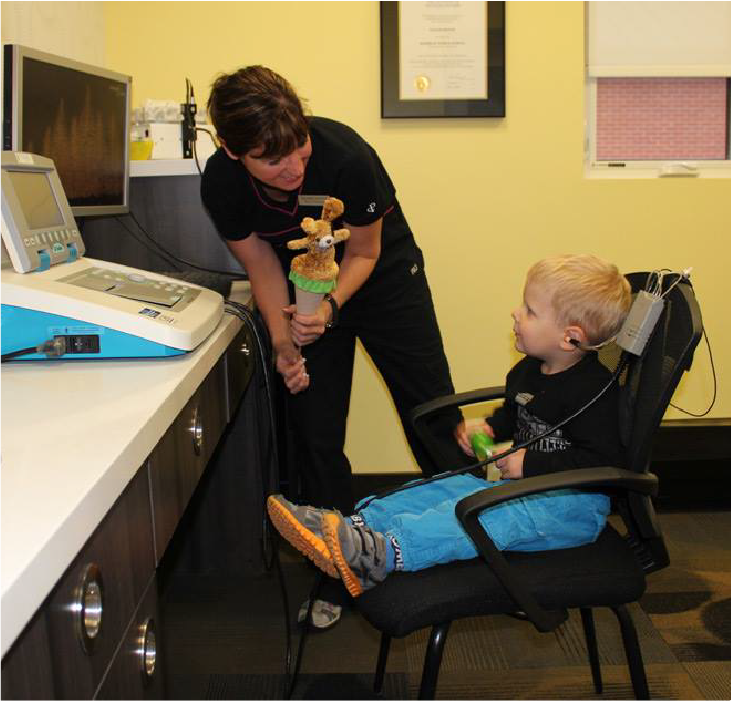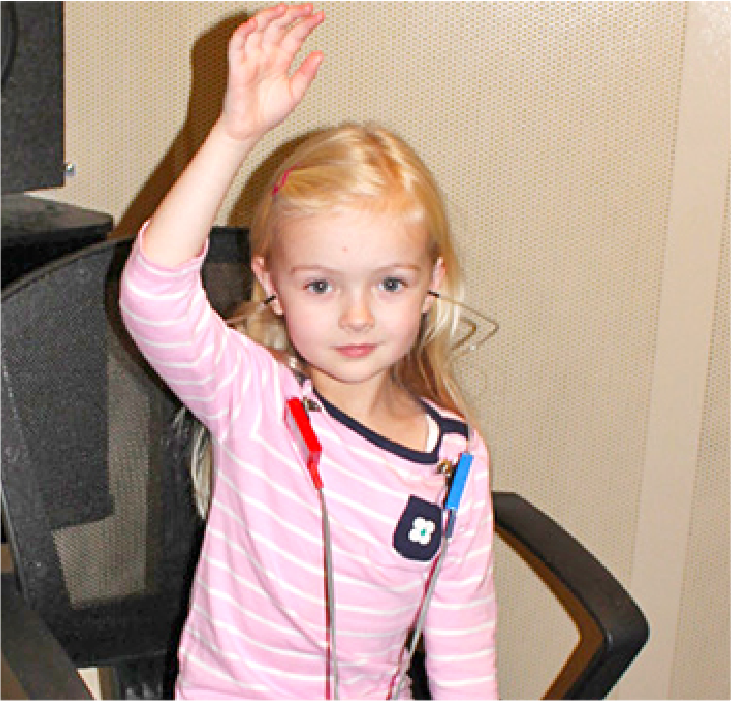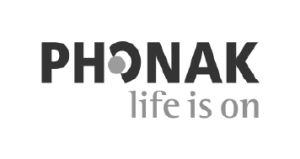Child Hearing Assessment
Depending on the age and development of the child, there are different methods for testing hearing. What will suit an individual child on any given day may vary and methods may be combined or adjusted to maximize the chances that we can get complete, reliable results. A shy child might need a quiet approach while an active child might need a more excited friend. Our pediatric audiologists are flexible! Help us by letting us know in advance of any special needs your child has.



What Happens at a Child Hearing Test?
At all ages, the audiologist will want to look in your child’s ears and test their middle ear function. These tests require the child to sit quietly for a measurement while a foam or rubber tip (like an earbud) is in their ear.
Visual Reinforcement Audiometry
From the time a child can sit up and look around until they are approaching 2 years of age, children are tested with Visual Reinforcement Audiometry. The child will be sitting in a sound booth on a parent’s lap. Sounds are presented through earphones (foam inserts) or speakers and the child is rewarded when they look towards the sound with lighted and/or animated toys/images. The test requires some cooperation from the child. The parent’s job is to hold the child and to keep them from removing earphones.
Conditioned Play Audiometry
Between the ages of 2 and 3 years, children start to get bored of Visual Reinforcement Audiometry and we move on to Conditioned Play Audiometry. During play audiometry, the child wears earphones (foam inserts). When a sound is presented, the child is instructed to do something with a toy (i.e. throw it in a bucket, add a block to the castle). The test requires cooperation from the child to play the “game”. The parent may also be involved as the audiologist’s assistant, passing the child toys.
Conventional Audiometry
Once a child is old enough to keep headphones or earphones on and respond reliably to sounds (typically 4 years and above), they can be tested with conventional audiometry. During this testing, “beeps” are played in the child’s ears at different volumes and pitches. The child is asked to respond in some way when they hear the sound (i.e. raise their hand, say “yes”). Testing for toddlers and young children may also ask them to repeat softly spoken words while listening through headphones or point to body parts (i.e. eyes, nose, ears) when asked. This requires them to sit calmly and listen to the examiner through the headphones or inserts.
Auditory Brainstem Response
Auditory Brainstem Response (ABR) threshold testing is used for assessing hearing sensitivity in infants aged 0-6 months. This test is performed while the infant is asleep and involves playing soft sounds through earbuds and recording the electrical activity of the auditory nerve and brainstem from electrodes placed on the baby’s scalp. ABR is usually completed through the infant hearing program on babies that fail their infant screening, but private testing is also available. ABR assessment may also be an option for older individuals who cannot respond consistently to other methods of assessment.
How to Prepare For Your Child’s Hearing Test
Preparing your child for what to expect can help to make the experience more pleasant for everyone. If the child is prepared, the examiner will likely be able to get more reliable results in a shorter time and avoid having to bring your child back for repeat testing.





Book Your Hearing Health Check Appointment
Book your appointment by calling or texting 1-833-669-4425.






